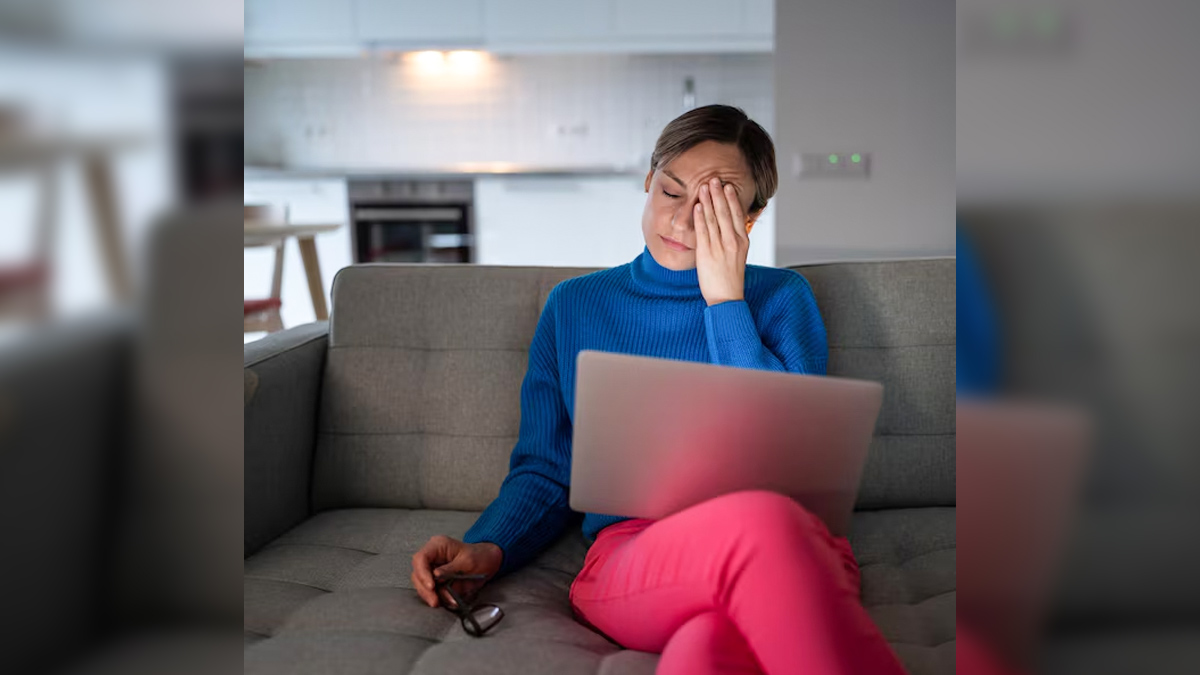Does Screen Time Trigger Headaches? The Truth About Blue Light
Doctor Verified
Blue light is often blamed for triggering headaches after prolonged screen time. However, is it the only cause? A doctor explains in detail.

When we look or stare at the screen for long hours, it leads to something that many of us don’t realise – we blink less.
“When you’re staring at a screen, especially for hours, you forget to blink naturally,” says Dr Mehta. “This causes eye dryness and discomfort.”
A 2024 study among Bangladeshi students published in the found that long hours of screen time, especially over a year, can increase the risk of headaches.
Around 26% reported migraines, 47% had tension-type headaches, and 15% experienced both. Factors like eye strain, poor sleep, depression, and family history of headaches made things worse.
Moreover, staring closely at digital devices for extended periods tires out the eye muscles, which can result in eye strain and what’s known as asthenopic symptoms, a term for visual fatigue that often leads to headaches, blurry vision, and difficulty focusing.
Top Stories

While blue light is commonly singled out, Dr Mehta believes it’s not the only factor. Blue light does play a role in causing digital eye strain, but it’s equally about other issues—like excessive screen time, high brightness settings, poor posture, and not using the correct prescription glasses if needed.
In short, the headache or eye discomfort you experience might not be solely from blue light but a combination of bad screen habits and neglected eye care.
Yes, but within reason. According to Dr Mehta, blue light-blocking glasses can reduce some of the strain on your eyes, which in turn may lessen the chance of headaches. They help to reduce eye strain and thereby indirectly reduce headaches, says Dr Mehta. But they are not the sole solution. Good screen habits are equally, if not more, important.
According to Dr Mehta, “Anything more than three hours a day of uninterrupted screen time is considered excessive.”
Given how common long hours at the screen have become, especially for work, this can be difficult to avoid. The key is to take frequent breaks and be aware of your screen habits.
Also Read: How To Stop Summer Headaches Without Popping Pills Every Afternoon

If you can’t cut down your screen time, you can still protect your eyes. Dr Mehta shares simple, effective ways to reduce screen fatigue:
- Blink consciously: Make it a habit to blink often while working to keep your eyes moist.
- Get your eyes tested: Ensure you’re wearing the right prescription to avoid unnecessary strain.
Screen time does trigger headaches, mainly because of the eye strain. However, while many blame the blue light, the real problem is often a combination of poor screen habits, long hours without breaks, and ignoring eye health. By being more mindful of how you use your devices, taking regular breaks, and using tools like blue light glasses when needed, you can go a long way in keeping screen-induced headaches at bay.













